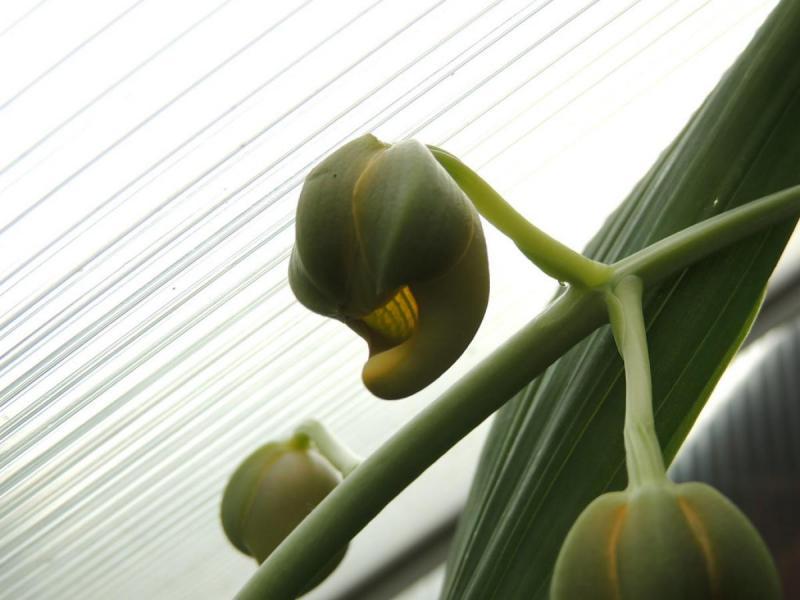Catasetum ochraceum
Also known as: The Ochre or Catasetum inornatum in the subfamily: Epidendroideae
Native to: Bogota D.C. - Colombia Departamento del Huila - Colombia
General Information
The Ochre is a medium sized warm to hot growing epiphytic, lithophytic or terrestrial orchid belonging to the sub family Epidendroideae native to Colombia.
Plant Description
Each new growth has numerous elliptic lance shaped leaves that grow to 10-40cm long. Pseudobulbs grow to 5-30cm
Flowers
Numerous fragrant blossoms appear
Fragrance
The orchid is fragrant.
Substrate(s)
- Coarse
- Bark
- Charcoal
- Treefern
- Spaghnum Moss
- Perlite
Care Notes
These orchids like to be watered regulary, especially during warm weather, and prefer a well draining mix or also do well mounted, provided they can be watered daily or even many times a day.
These are quite a forgiving orchid, there are no special requirements to get this orchid to flower, just good care and consistent conditions. Larger plants may be more fussy and can react poorly to change; a poorly timed repotting, a pest infection or an unusually hot day can set them back for a couple of years. However, even plants that have been treated poorly can thrive, and if they are set back they often recover much stronger then they would otherwise be.
Fragrant:- IsFragrant
Climate
Grows at low to high elevations. Rainfall ranges from 51mm to 160mm per day, heaviest in October and lightest in July. Humidity ranges from 68% to 76%, highest in November and lowest in January. Temperature ranges from 14C to 26C, highest in February (16C to 26C) and lowest in January (14C to 23C).
Watering
These orchids prefer a constant supply of moisture, with a slight drying out between waterings. Saucers can be placed under pots to retain moisture during hot weather, however the saucers should be removed or let to dry every 1-2 weeks to prevent rot. Keep an eye on the plant especially in hot weather and look for cues of under/overwatering and adjust accordingly.
During Summer, be sure to keep media moist. Keep moisture levels up during hot weather as the plant is prone to dehydrationFertiliser
These plants thrive on fertiliser, especially during periods of growth. Liquid fertiliser can be applied year round at the recommended strength, augmented with manure pellets or other quickly degradable fertiliser, applied away from the base of the plant, during periods of strong growth. Slow release pellets can also be applied year round at the rate of 2-3 pellets per cup (250ml) of media.
They can benefit from a high phosphate fertiliser leading up to flowering season, and by a high nitrogen fertiliser when new growth appears.
Use balanced fertiliser year round. Be sure to flush out excess fertiliser by running water through the media regularly year round. This plant is a heavy feeder year round, full strength fertiliser can be used. Fertiliser can be applied heavily year round. Use a high Nitrogen fertiliser during Spring and Summer. Use a high Phosphorous fertiliser during Summer.Potting
These plants can be sensitive to repotting though should not require repotting regularly. Repotting should be done when the mix has broken down to the point that it doesn't absorb water or holds onto water for far too long, usually the plant shows a decline in growth as well.
The mix should be free draining, with a blend of 30% inorganic ingredients such as coarse sand, gravel or perlite, mixed in with about 70% organic ingredients such as peat, leaf litter or decomposed bark. Avoid commercial potting mixes as they can vary wildly and may contain "wetting agents" that can hold onto water for loo long, causing rotting and stunted growth.
Use water retentive media such as moss to prevent roots from drying out quickly This plant does very well in baskets or suspended pots Repotting is best done annually.




